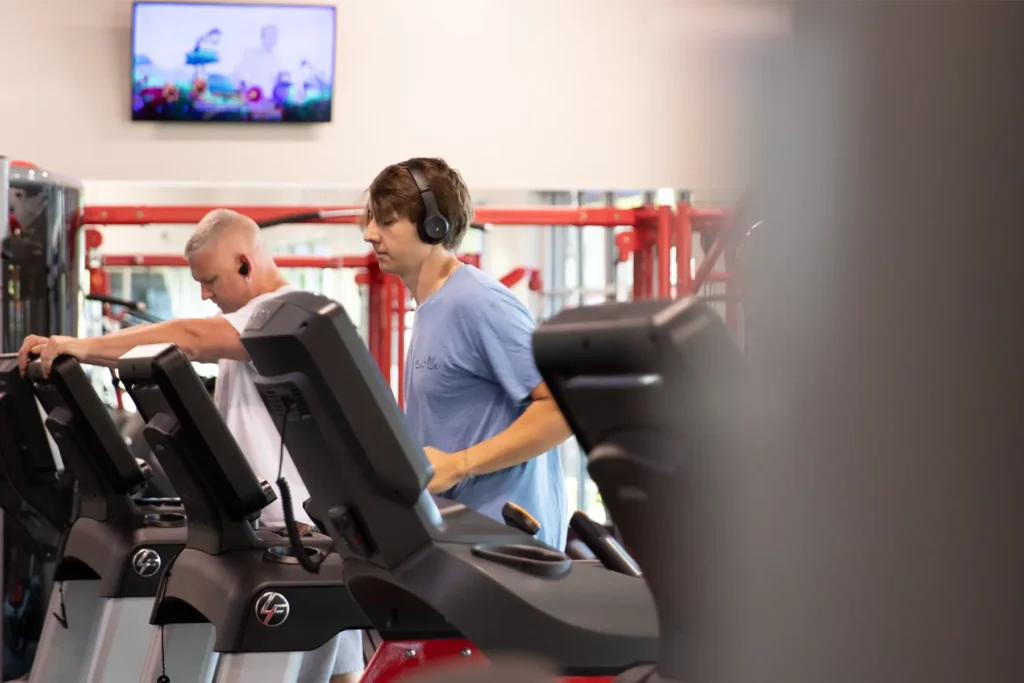Physical fitness is not just a goal; it’s a way of life that enhances every aspect of your well-being, from mental health to physical agility. In the world of fitness, numerous methodologies promise results, but few are as debated as calisthenics and weight training. Each method offers unique benefits and challenges, catering to different preferences, goals, and lifestyles.
What is calisthenics training?
Calisthenics is a form of strength training that fundamentally relies on a person’s body weight to improve physical fitness. This type of workout has been a method of choice for soldiers, gymnasts, and fitness enthusiasts throughout history.
The beauty of calisthenics lies in its simplicity and accessibility. Exercises such as push-ups, pull-ups, sit-ups, and squats can be performed anywhere, making it an ideal choice for those seeking flexibility in their workout routines.
What is weight training?
Weight training, also known as strength training, involves the use of equipment such as dumbbells, barbells, and weight machines to add resistance beyond what the body’s weight provides.
This method is pivotal in building muscle mass, strength, and endurance. Weight training has evolved significantly, now featuring a wide range of techniques and apparatuses that target specific muscle groups for more defined and measurable results.
At the core of weight training is the principle of overload, where muscles are progressively challenged to handle higher loads or resistance to foster growth and strength.
Benefits of calisthenics
- Flexibility and mobility: Regular practice of calisthenics improves joint mobility and increases flexibility. Exercises like lunges and stretches play a crucial role in enhancing your range of motion, which can benefit everyday activities and reduce the risk of injuries.
- Strength and muscle endurance: Despite using only body weight, calisthenics effectively builds strength and endurance. This is achieved through compound movements that engage multiple muscle groups at once, fostering functional strength that supports daily activities and other sports. There are even calisthenics techniques for maximum muscle growth.
- Cost-effectiveness and accessibility: One of the most significant benefits of calisthenics is that it doesn’t require equipment or gym memberships. Exercises can be performed anywhere, from parks to living rooms, making it an accessible option for people at any fitness level and with any budget.
- Improves body control and awareness: Calisthenics exercises demand balance and coordination, which in turn enhance body awareness and control. Mastering movements like the handstand or L-sit can also boost confidence and provide a sense of achievement.
- Scalable and varied: The scalable nature of calisthenics allows it to cater to both beginners and advanced athletes. Modifications can be made to increase or decrease the difficulty level, providing a continual challenge as your fitness level improves. Calisthenics is often part of HIIT workouts, a great routine for helping endomorphs maximize fat loss.
Benefits of weight training
- Increased muscle mass and strength: Weight training is exceptionally effective in building muscle mass and enhancing strength. Through targeted exercises, you can focus on specific muscle groups and make significant gains in size and power.
- Improved bone density: Regular weight training increases bone density and strength, which can help prevent the onset of osteoporosis and reduce the risk of fractures, especially important as we age.
- Precise targeting of muscle groups: Unlike calisthenics, which often involves compound movements, weight training allows for the isolation of specific muscles. This precision is beneficial for addressing weaknesses and focusing on aesthetic goals, such as sculpting and defining muscles.
- Boosts metabolism: Lifting weights can help boost your resting metabolic rate, meaning you burn more calories even when you’re not exercising. This metabolic lift is due to the increased energy needed to maintain muscle mass.
- Enhanced physical performance: Weight training improves overall physical performance, supporting better posture, stronger lifting capabilities, and greater endurance. These benefits are particularly valuable for athletes looking to improve their performance in sports.
- Mental health benefits: Weight training is known to improve mental health by reducing symptoms of depression and anxiety. The focus and concentration required during training can also act as a form of meditation, providing mental clarity and stress relief.
Comparing effectiveness for beginners
When starting a fitness regimen, the key factors to consider include ease of entry, initial costs, and the learning curve. Here’s how calisthenics and weight training compare for beginners:
Calisthenics
- Ease of starting: While calisthenics is highly accessible, requiring only your body and some basic movements, it may not offer the structured progression that some beginners might need for optimal results. This lack of structure can sometimes lead to slower progress in strength and skill development.
- Learning curve: The basic exercises in calisthenics, such as push-ups, sit-ups, and squats, are relatively straightforward to learn and perform. This simplicity helps beginners quickly see progress in their strength and endurance without overwhelming them
- Initial costs: There is minimal financial investment required to begin calisthenics. It can be practiced at home or in a park, eliminating the need for a gym membership or expensive equipment.
Weight training
- Ease of Starting: Despite appearing daunting initially due to the variety of equipment and techniques, weight training offers structured programs that can greatly benefit beginners. Many gyms provide introductory sessions with trainers who ensure proper form and safe workout routines, which is crucial for effective and injury-free workouts. If you are looking for a personal trainer in Fayetteville to assist you with weight training, then HiTone Fitness is one of the best places to start.
- Learning Curve: The learning curve for weight training, while steeper, brings with it the advantage of precise muscle targeting and faster strength gains. This structure can be particularly motivating for beginners as they see noticeable improvements, encouraging them to stick with their fitness regimen.
- Initial Costs: Starting weight training usually requires access to a gym unless one invests in home equipment, which can be costly. Gym memberships provide access to a variety of equipment suitable for all levels.
Final thoughts
When it comes to choosing between calisthenics and weight training, it’s clear that both methods offer significant benefits and can be tailored to meet individual fitness goals and lifestyles. Calisthenics shines with its accessibility and ease of integration into daily life, promoting flexibility, balance, and endurance. On the other hand, weight training excels in providing structured and measurable strength gains, precise muscle targeting, and significant improvements in bone density and metabolic rate.







